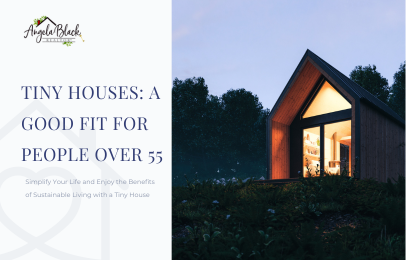
Simplify Your Life and Enjoy the Benefits of Sustainable Living with a Tiny House
As people age, their housing needs often change. For many seniors, maintaining a large house can become a burden, and they may want to downsize to a more manageable living space. That’s where tiny houses come in. These small homes, typically between 100 and 400 square feet, have become increasingly popular in recent years, and for good reason. Here are some of the reasons why tiny houses can be a good fit for people over 55.
Lower Maintenance
One of the biggest benefits of living in a tiny house is that it requires less maintenance and upkeep than a larger home. As people age, they may find it more difficult to keep up with cleaning, repairs, and landscaping. In a tiny house, there’s simply less to maintain, which can be a significant benefit for older adults who want to simplify their lives.
Affordability
One of the biggest benefits of living in a tiny house is that it requires less maintenance and upkeep than a larger home. As people age, they may find it more difficult to keep up with cleaning, repairs, and landscaping. In a tiny house, there’s simply less to maintain, which can be a significant benefit for older adults who want to simplify their lives.
Mobility
Mobility can become an issue as people age. Tiny houses are often designed to be more accessible, with features like a ground-level entrance, no stairs or steps, and wider doorways to accommodate wheelchairs and walkers. This can make it easier for seniors to get around and maintain their independence.
Downsizing
As children move out and people retire, they often find themselves with more house than they need. Downsizing to a tiny house can simplify life and reduce the clutter and upkeep associated with a larger home. It can also free up time and resources for travel, hobbies, and other activities.
Sustainable Living
Many seniors are interested in sustainable living and reducing their carbon footprint. Tiny houses use fewer resources, require less energy to heat and cool, and are often built with sustainable materials. This can be a meaningful way for seniors to contribute to a more sustainable future.
In addition to these benefits, tiny houses can offer a sense of community and social connection. Many tiny house communities have sprung up around the country, offering residents a chance to connect with like-minded people and build a supportive network. For seniors who may be facing social isolation or loneliness, this can be especially valuable.
Of course, there are also some challenges associated with living in a tiny house. The space can be cramped, and there may be limited storage options. Additionally, zoning regulations and building codes can make it difficult to find a suitable location for a tiny house. However, for those who are willing to work through these challenges, the benefits of tiny house living can be significant.
Overall, tiny houses offer a simple, affordable, and sustainable living option for older adults who want to downsize and simplify their lives. With their lower maintenance, affordability, accessibility, and sustainable design, they can be a good fit for people over 55 who are looking for a new way of living in their retirement years.

